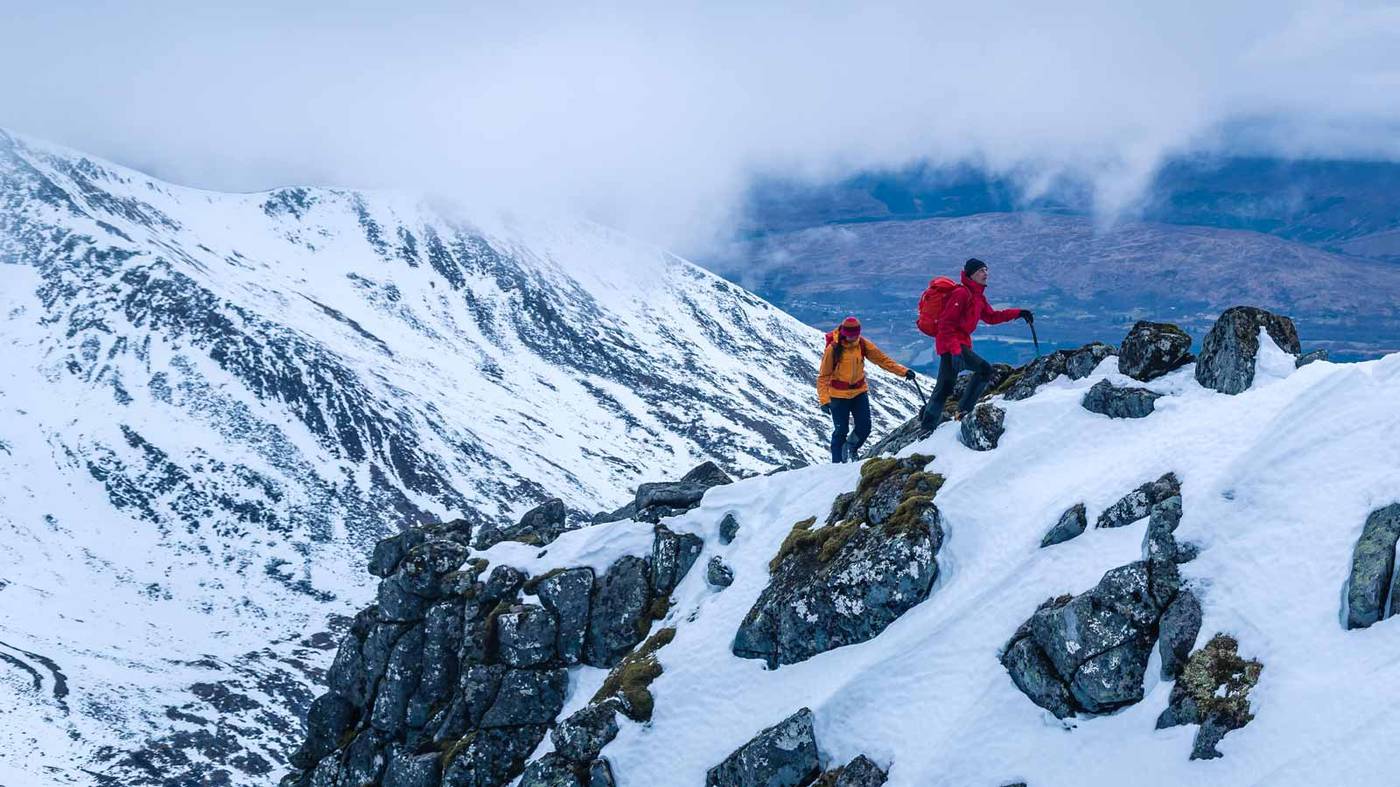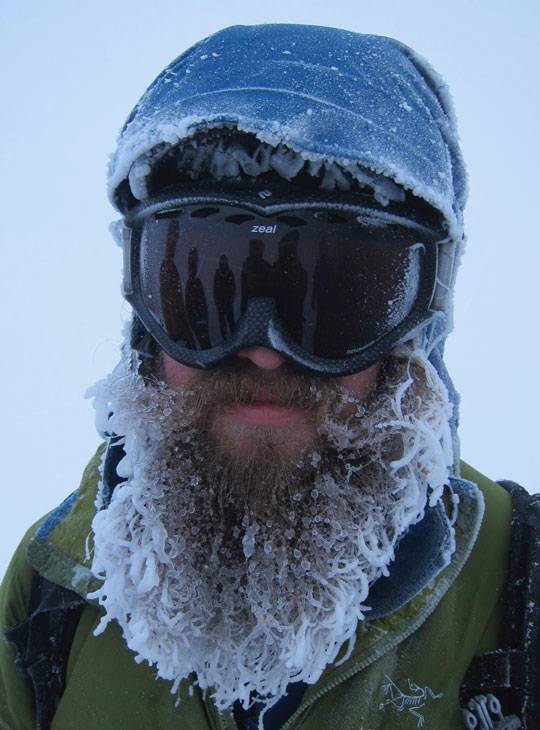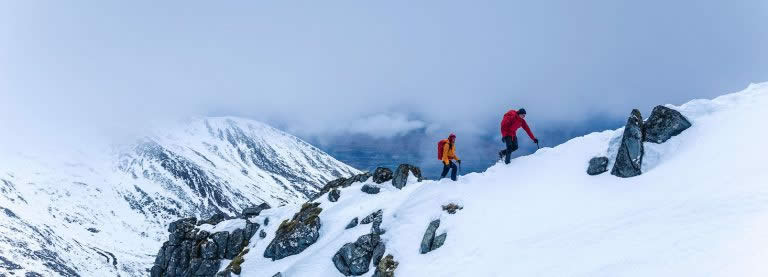What do I need to bring?
It’d be great if you can arrive with everything listed below. We have a small store and can lend anything marked with an * (for free). Please let us know in advance by completing the equipment loan form.
Ice axe* - 55-60cm long. This should be a walking / mountaineering axe rather than a lightweight ski touring one or a technical climbing axe, such as the DMM Cirque.
Boots* - good quality leather boots with a stiff sole - B2 or B3 rated. The Scarpa Manta Pro Gtx would be a good example.
Crampons* - 12 point mountaineering crampons that have anti-balling plates on and are compatible with your boots. The Grivel G12 is a good example.
Gaiters - extremely useful to prevent snow and scree entering your boots and help to keep your feet warm.
Crampon bag - a tough nylon bag to protect the contents of your rucksack from the sharp points.
Climbing helmet* - a CE rated climbing helmet that is large enough to fit over a hat.
Snow / ski goggles - an essential item for days out in the Scottish winter environment. A budget pair with two-layer lenses will be fine.
Rucksack* - there is generally a lot more that needs to be carried on a day out in the mountains in winter compared with summer. A 40 to 50 litre rucksack would work well.
Rucksack liner - almost no rucksacks are waterproof, so a waterproof liner is needed to keep your kit dry.
Either a large dry bag or several small ones works well or a strong plastic bag such as a rubble bag (not a bin bag). Expedition rucksack and liners
Tent
Sleeping bag (3/4 season)
Sleeping mat
Breathable bivi bag
Stove and fuel
Cooking and eating utensils
Expedition food is provided by PYB for everyone staying residentially. You’ll be able to cook / heat it all with a Jetboil style of stove.
Flask / water bottle - a small flask (1/2 to 3/4 litre) and a similar sized water bottle. Hydration systems with tubes rarely work well in winter.
Map - Ordnance Survey 1:50,000 map Sheet 41 of the Glencoe and Ben Nevis area. Ideally laminated or in a small map case.
Compass* - Silva Expedition Type 4, in degrees.
Waterproof case for your mobile phone - a method of protecting your mobile phone from the elements is essential.
Whistle - a cheap plastic whistle is a useful item of emergency equipment.
Head torch - an extremely useful item of emergency equipment. A Petzl Tikka + or similar would be fine.
Survival bag - an orange plastic survival bag is an important item of emergency equipment.
Personal first aid - a small first aid kit in a waterproof bag to include Compeed or similar for blisters, a wound dressing, a triangular bandage and pain relief e.g. Ibuprofen or paracetamol
Emergency food - some spare items of high energy food that are sealed in a bag eg. Chocolate or muesli bars.
Sun block and lip salve - to provide protection from UV radiation and the wind.
Trekking poles - useful for walking below the snow line and for low angle snow slopes. Should be collapsible into 3 or 4 sections to make stowage inside your rucksack easier.
Camera - of your choice - the smaller and lighter the better.
Clothing
Waterproof jacket - a robust breathable and waterproof jacket that fits over several layers. It should have a permanently attached hood that is large enough to go over a helmet.
Waterproof trousers or salopettes - a robust pair of breathable and waterproof over trousers, ideally long side zips (to aid putting on whilst wearing crampons) and braces.
Insulated jacket - a large warm jacket to wear whilst stationary is useful. It should be insulated with a synthetic material rather than down, which does not perform well in damp conditions.
Base layers - a couple of lightweight 'thermal' tops, short or long sleeved. Should be of a synthetic material and not cotton.
Mid layers - a couple of mid weight layers, ideally fleece, gives more flexibility for managing your temperature rather than one thick one.
Trousers - fleece trousers or power stretch tights work very well under waterproof trousers.
Hat - a fleece or wool hat that is suitable to be worn under a helmet - no bobbles! A neck gaiter is useful.
Waterproof gloves - at least two pairs are essential. They should be dexterous enough that you can put crampons on whilst wearing them.
Thin gloves - A thin fleece pair is useful for wearing whilst approaching the hills.
Socks - Several pairs of loop stitch style socks.
Personal clothing and effects for life in the hotel including swimwear for the pool.



